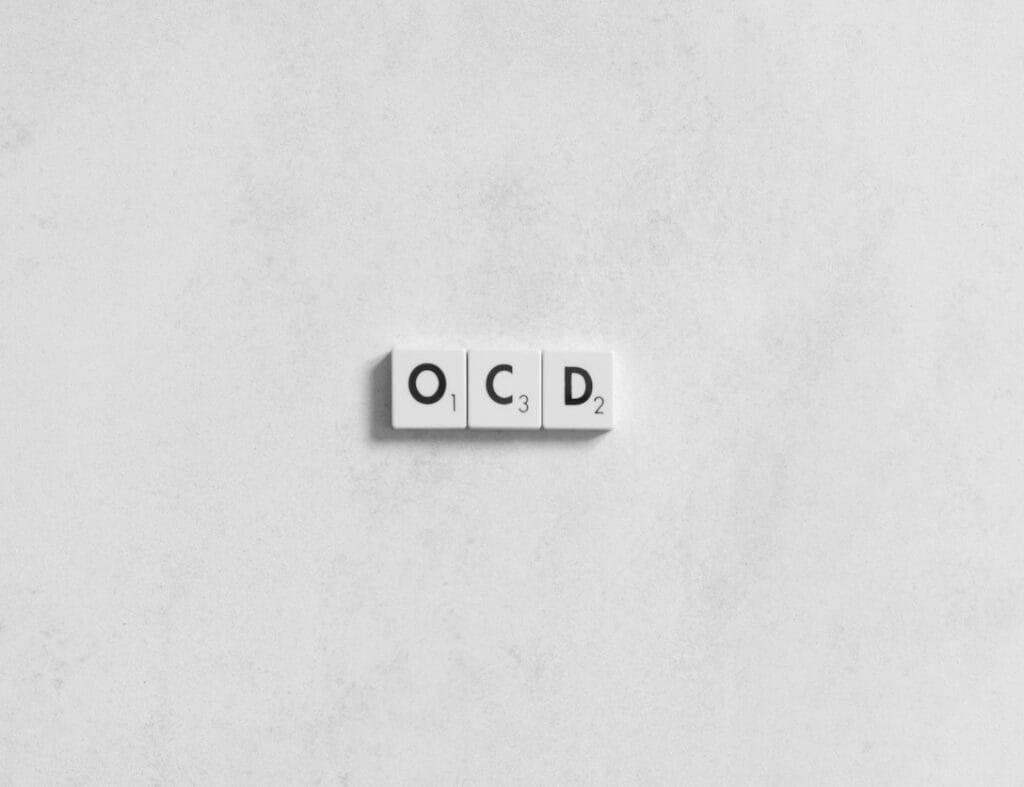The importance of psychodiagnosis in modern therapy
Definition and Purpose of Psychodiagnosis
Psychodiagnosis involves the assessment and identification of psychological conditions and disorders. This process is fundamental to the field of clinical psychology and mental health care, serving as a foundation for effective treatment planning. By utilizing various diagnostic tools and psychological tests, professionals can determine the specific nature of a patient’s mental health issues, which helps in tailoring interventions that are both appropriate and effective.
Tools and Techniques Used
The tools used in psychodiagnosis vary widely but generally include clinical interviews, psychological tests, behavioral assessments, and sometimes neurophysiological testing. These tools help in gathering detailed information about a person’s emotional state, personality traits, cognitive abilities, and behavior patterns. Some of the most commonly used tests include the Minnesota Multiphasic Personality Inventory (MMPI), the Beck Depression Inventory (BDI), and various projective tests such as the Rorschach Inkblot Test and the Thematic Apperception Test (TAT).
The Psychodiagnostic Process
The process of psychodiagnosis is meticulous and structured, typically beginning with an initial consultation where the therapist gathers comprehensive background information from the patient. This may include medical history, current symptoms, life circumstances, and any previous treatments or diagnoses.
Steps from Initial Consultation to Diagnosis
- Initial Consultation: Gathering comprehensive patient history and presenting problems.
- Assessment Phase: Implementation of specific psychological tests and assessments.
- Evaluation: Analysis and interpretation of the data collected during the assessment.
- Diagnosis: Identification of the psychological disorder based on the DSM-5 or ICD-10 criteria.
- Feedback Session: Discussing the diagnosis with the patient and planning the next steps.
Example of a Typical Psychodiagnostic Session
Imagine a session where a psychologist uses the Rorschach Test to evaluate a patient suspected of having borderline personality disorder. The session would involve presenting the inkblots to the patient, recording their responses, and later analyzing these responses in the context of established psychological theories and clinical judgment to derive insights about the patient’s personality structure and emotional functioning.
Qualifications and Training of Professionals
Psychodiagnosis should be conducted by a qualified professional trained in clinical psychology or a related mental health field. This professional typically holds a doctoral degree, such as a PhD or PsyD, and has undergone extensive training in administering and interpreting psychological tests and assessments.
Necessary Skills and Qualifications for Practitioners
- Educational Background: At least a Master’s degree in psychology, preferably a Doctorate.
- Licensure and Certifications: A valid license to practice clinical psychology; additional certifications may be required for specific tests.
- Experience: Hands-on experience through internships and supervised clinical practice.
Importance of Continuous Education
Given the evolving nature of psychological theories and practices, ongoing education is crucial. Professionals must stay updated with the latest research and advancements in diagnostic tools and techniques. Continuing education not only enhances the accuracy of diagnoses but also ensures that treatment methods remain effective and are based on the latest scientific evidence.
In conclusion, understanding psychodiagnosis is essential for all mental health professionals. This section emphasizes not only the complexity and importance of accurate diagnosis but also the need for thorough training and ethical responsibility in the handling of psychological assessments.
Psychodiagnosis in Treating Personality Disorders
Characteristics of Personality Disorders
Personality disorders are characterized by enduring, inflexible patterns of thinking, feeling, and behaving that deviate significantly from the expectations of a person’s culture and lead to significant distress or impairment. These disorders are typically grouped into three clusters based on descriptive similarities:
- Cluster A (Odd or Eccentric Disorders): Includes Paranoid, Schizoid, and Schizotypal Personality Disorders.
- Cluster B (Dramatic, Emotional, or Erratic Disorders): Encompasses Borderline, Narcissistic, Histrionic, and Antisocial Personality Disorders.
- Cluster C (Anxious or Fearful Disorders): Consists of Avoidant, Dependent, and Obsessive-Compulsive Personality Disorders.
Each type presents unique symptoms and challenges, from the profound emotional instability and impulsive behaviours of Borderline Personality Disorder to the grandiosity and lack of empathy characteristic of Narcissistic Personality Disorder.
Role of Psychodiagnosis in Identifying Personality Disorders
Diagnosing personality disorders can be particularly challenging due to their complex nature and the subtlety of symptoms. Accurate psychodiagnosis is crucial because it influences every subsequent decision made in the treatment process.
Challenges in Diagnosing
- Subjectivity in Patient Reporting: Patients’ self-reports may be biased or incomplete.
- Overlapping Symptoms: Many personality disorders share symptoms with each other and with other mental health disorders, complicating the diagnostic process.
- Resistance to Diagnosis: Due to the nature of these disorders, individuals may have poor insight into their own behaviors and may be resistant to discussing them or seeking help.
Case Studies Illustrating Successful Identification
Consider a case where a young adult male presents symptoms that could indicate both Narcissistic and Borderline Personality Disorders. Through detailed interviews, specific psychodiagnostic tests (like the Personality Diagnostic Questionnaire), and observation, a psychologist might determine the predominant disorder, aiding in focused therapeutic intervention.
Impact on Treatment Planning
An accurate diagnosis is foundational for effective treatment planning in personality disorders. It not only helps in choosing the appropriate therapeutic approach but also in setting realistic treatment goals and expectations.
How Accurate Diagnosis Influences Therapeutic Approaches
For instance, Dialectical Behavior Therapy (DBT) is particularly effective for Borderline Personality Disorder, emphasizing emotional regulation and interpersonal effectiveness. In contrast, treatment for Narcissistic Personality Disorder may involve different strategies, focusing on fostering empathy and adjusting maladaptive self-perceptions.
Integration with Other Treatment Modalities
Effective treatment often requires a combination of psychotherapy, medication, and sometimes lifestyle adjustments. For example, Cognitive Behavioral Therapy (CBT) might be used alongside pharmacotherapy to treat specific symptoms like anxiety or depression that commonly co-occur with personality disorders.
By integrating psychodiagnosis with a multi-modal treatment approach, mental health professionals can address the complexities of personality disorders more effectively. This section underscores the indispensable role of psychodiagnosis in unraveling the intricacies of these disorders, facilitating a deeper understanding and more tailored interventions. This precision ultimately leads to better patient outcomes, emphasizing the profound impact of an accurate and comprehensive diagnostic process in the field of mental health.
Psychodiagnosis in Treating Depression
Understanding Depression
Depression is a common but serious mood disorder that negatively affects how a person feels, thinks, and handles daily activities. It is characterized by persistent feelings of sadness, hopelessness, and a lack of interest or pleasure in activities. Depression can vary in intensity and duration and includes several subtypes such as Major Depressive Disorder (MDD), Persistent Depressive Disorder (dysthymia), and Seasonal Affective Disorder (SAD), among others.
Symptoms and Types of Depression
Symptoms of depression can include:
- Persistent sad, anxious, or “empty” mood
- Feelings of hopelessness or pessimism
- Irritability
- Feelings of guilt, worthlessness, or helplessness
- Loss of interest in hobbies and activities
- Decreased energy or fatigue
- Difficulty concentrating, remembering, or making decisions
- Insomnia or excessive sleeping
- Changes in appetite and/or weight
- Thoughts of death or suicide, or suicide attempts
- Aches or pains, headaches, cramps, or digestive problems without a clear physical cause and/or that do not ease even with treatment
Each subtype of depression has unique features that influence the approach to psychodiagnosis and treatment.
Statistics on Prevalence and Demographics
Depression is one of the most common mental health disorders worldwide. It affects millions of adults and adolescents, with noticeable variations in prevalence among different age groups, genders, and socioeconomic backgrounds. Understanding these demographic factors is crucial for targeted diagnostic and therapeutic strategies.
The Importance of Accurate Diagnosis
An accurate diagnosis of depression is critical because it directly affects the treatment plan and outcome. Misdiagnosis can lead to inappropriate or ineffective treatment, potentially worsening the patient’s condition.
Differentiating Between Types of Depression
Differentiating between various types of depression involves a thorough psychodiagnostic evaluation, including clinical interviews, self-report measures, and sometimes physical examinations to rule out medical causes of depressive symptoms. This differentiation is crucial as it guides the choice of treatment modalities.
Identifying Co-occurring Disorders
Depression frequently co-exists with other mental and physical illnesses, which can complicate diagnosis and treatment. Common co-occurring disorders include anxiety disorders, substance abuse, and chronic health conditions like diabetes and cardiovascular diseases. Recognizing these co-occurring conditions is vital for a holistic treatment approach.
Treatment Strategies Based on Psychodiagnosis
The choice of treatment for depression depends heavily on the specific type and severity of the disorder, as well as the individual’s preferences and previous responses to treatment.
Personalized Treatment Plans
Effective treatment plans are highly personalized. They may include psychotherapy, such as Cognitive Behavioral Therapy (CBT) or Interpersonal Therapy (IPT); pharmacotherapy, such as antidepressants; and lifestyle interventions, including exercise and nutrition guidance.
Example Treatments and Their Outcomes
For instance, a patient diagnosed with mild Major Depressive Disorder might benefit from psychotherapy alone, while someone with severe depression may require a combination of antidepressant medication and psychotherapy. Treatment effectiveness often hinges on the precision of the initial psychodiagnosis, which should be regularly revisited to adapt the treatment plan as the patient’s condition evolves.
This section of the article highlights the critical role of psychodiagnosis in managing depression effectively. It emphasizes that a nuanced understanding of the disorder through comprehensive psychodiagnostic evaluation not only aids in distinguishing between different types of depression but also facilitates the integration of treatments to address both the primary symptoms and any co-occurring conditions.
Psychodiagnosis in Treating Anxiety Disorders
Overview of Anxiety Disorders
Anxiety disorders encompass a range of conditions characterized by excessive and persistent fear and anxiety that interfere with daily activities. Common types include Generalized Anxiety Disorder (GAD), Panic Disorder, Social Anxiety Disorder, Specific Phobias, and Post-Traumatic Stress Disorder (PTSD). Each has unique features but shares the core element of disproportionate worry or fear.
Types of Anxiety Disorders
- Generalized Anxiety Disorder (GAD): Characterized by chronic anxiety, exaggerated worry, and tension, even when there is little or nothing to provoke it.
- Panic Disorder: Involves recurrent, unexpected panic attacks—sudden surges of overwhelming fear and physical symptoms like heart palpitations, chest pain, or dizziness.
- Social Anxiety Disorder: Involves overwhelming worry and self-consciousness about everyday social situations, often centered on a fear of being judged by others or acting in a way that might provoke ridicule.
- Specific Phobias: Involves an intense, irrational fear of specific objects or situations, such as heights, spiders, or flying.
- Post-Traumatic Stress Disorder (PTSD): Can develop after exposure to a terrifying event or ordeal in which severe physical harm occurred or was threatened.
Common Symptoms and Triggers
Symptoms across these disorders can vary but typically include feelings of panic, fear, uneasiness, sleep problems, not being able to stay calm, cold or sweaty hands, shortness of breath, heart palpitations, dry mouth, nausea, tense muscles, and dizziness. Triggers can be specific to the disorder and the individual, ranging from certain social situations and phobic objects to thoughts of past traumas.
Diagnosing Anxiety with Psychodiagnosis
Proper diagnosis of anxiety disorders is essential for effective treatment. Psychodiagnosis uses a combination of clinical interviews, symptom assessment, and sometimes physiological monitoring to identify the specific type and triggers of anxiety.
Tools and Methods Used in Diagnosis
- Clinical Interviews: Structured and semi-structured interviews help uncover the nature and extent of anxiety.
- Psychological Assessments: Standardized anxiety assessment tools such as the Beck Anxiety Inventory or the Hamilton Anxiety Rating Scale gauge the severity of anxiety symptoms.
- Physiological Monitoring: In cases like panic disorder, monitoring heart rate or other physiological responses can be useful.
The Importance of Contextual and Cultural Factors
Understanding the patient’s cultural background and environmental context is critical in diagnosing anxiety disorders accurately. Cultural norms can influence how symptoms are expressed and perceived, which can impact both diagnosis and treatment.
Tailoring Treatments to Specific Anxiety Disorders
The specificity of the psychodiagnosis allows for treatments that are tailored to the individual’s unique anxiety profile, enhancing treatment efficacy.
Case Studies on Effective Interventions
For example, Cognitive Behavioral Therapy (CBT) has been highly effective in treating several anxiety disorders by helping individuals alter thought patterns to reduce anxiety. For PTSD, trauma-focused CBT or Eye Movement Desensitization and Reprocessing (EMDR) have shown success in reducing symptoms by processing the trauma.
Role of Therapy and Medication
Treatment often involves a combination of psychotherapy and, if necessary, medication. SSRIs (Selective Serotonin Reuptake Inhibitors) and benzodiazepines are commonly prescribed for their efficacy in reducing symptoms of anxiety, although the latter is generally recommended for short-term use due to potential dependency issues.
This section emphasizes the importance of accurate psychodiagnosis in identifying the specific type and underlying causes of anxiety disorders, which guides the subsequent choice of targeted therapeutic interventions. By thoroughly understanding each disorder’s nuances through detailed psychodiagnostic evaluation, mental health professionals can significantly improve the quality of life for individuals struggling with anxiety.
Challenges and Ethical Considerations in Psychodiagnosis
Common Challenges in Psychodiagnosis
Psychodiagnosis, while invaluable, is not without its difficulties. Professionals face a variety of challenges that can impact the accuracy and effectiveness of diagnoses.
Misdiagnosis and Its Consequences
Misdiagnosis can occur due to a variety of factors, including overlapping symptoms between disorders, inadequate patient history, and clinician bias. The consequences of misdiagnosis are significant, potentially leading to inappropriate or harmful treatments, increased patient distress, and unnecessary stigma.
Overcoming Biases and Ensuring Accurate Assessments
Clinicians must be vigilant about their own biases and preconceptions, which can influence diagnostic decisions. This includes biases related to gender, race, age, and socioeconomic status. Training in cultural competence and ongoing supervision can help reduce these biases, ensuring more accurate and personalized diagnoses.
Ethical Considerations
Ethical practice in psychodiagnosis is paramount. The sensitive nature of psychological assessment demands a high standard of ethics, including confidentiality, informed consent, and respect for patient autonomy.
Confidentiality and Patient Consent
Maintaining confidentiality is a fundamental ethical obligation in any therapeutic setting. Patients must be assured that their personal information and diagnostic results are handled with the utmost discretion. Additionally, obtaining informed consent before beginning any diagnostic assessment is essential. Patients should be fully aware of the nature and purpose of the evaluations they will undergo.
Handling Sensitive Information
The information revealed in psychodiagnostic sessions can be extremely personal and sensitive. Clinicians must be skilled in handling such information with empathy and professionalism, ensuring that it is used solely for the benefit of the patient’s treatment.
Ethical Dilemmas Faced by Practitioners
Practitioners may encounter various ethical dilemmas, such as decisions about disclosing information to third parties (in cases where there might be a risk to the patient or others) or managing conflicts between what the clinician believes is in the patient’s best interest and the patient’s own preferences.
Conclusion
This section underscores the complexities and responsibilities inherent in psychodiagnosis. It highlights the importance of accurate, unbiased assessments while also respecting the ethical considerations that safeguard patient welfare. As the field of psychology continues to evolve, so too must the standards and practices around psychodiagnosis, ensuring that they remain robust, sensitive, and above all, patient-centered. This ongoing commitment to ethical and effective practice not only enhances diagnostic accuracy but also builds trust and promotes better therapeutic outcomes, ultimately supporting the overarching goal of improving mental health care.
What’s Next?
The vital role of psychodiagnosis in modern therapy for personality disorders, depression, and anxiety cannot be overstated. As we’ve explored throughout this article, accurate psychodiagnosis serves as the cornerstone of effective mental health treatment, enabling clinicians to devise targeted and individualized treatment plans that address the specific needs of their patients.
Summary of the Importance of Psychodiagnosis
Psychodiagnosis allows mental health professionals to understand the complex interplay of biological, psychological, and social factors that contribute to mental disorders. By identifying the precise nature of a disorder, therapists can apply the most appropriate therapeutic techniques and interventions, whether that involves medication, psychotherapy, or a combination of approaches.
Future Outlook on Psychodiagnostic Methods
Looking ahead, the field of psychodiagnosis is poised for significant advancements. Innovations in technology, such as artificial intelligence and machine learning, promise to enhance diagnostic tools, making them more accurate and accessible. Furthermore, increased awareness and understanding of mental health issues are likely to reduce stigma and encourage more people to seek help when needed.
Final Thoughts on Improving Diagnostic Accuracy and Treatment Effectiveness
The future of psychodiagnosis and therapy lies in continued research, education, and policy development. Mental health professionals must commit to ongoing learning and adapt to new methods and findings to keep their practices current and effective. Additionally, the integration of cross-disciplinary approaches, encompassing genetics, neurology, and social sciences, may offer deeper insights and more refined treatment strategies.
The Impact of Policy and Advocacy
It is also essential for mental health advocates and policymakers to collaborate in creating supportive environments and policies that facilitate access to care and promote mental health awareness. Effective policies can help ensure that sufficient resources are allocated to mental health services, training for professionals is adequately provided, and cutting-edge research is supported.
By embracing these advancements and challenges, the mental health community can continue to improve the lives of those affected by personality disorders, depression, and anxiety. Through diligent practice, ethical consideration, and compassionate care, we can achieve greater outcomes in mental health treatment and ensure a brighter, healthier future for all individuals struggling with these conditions.












